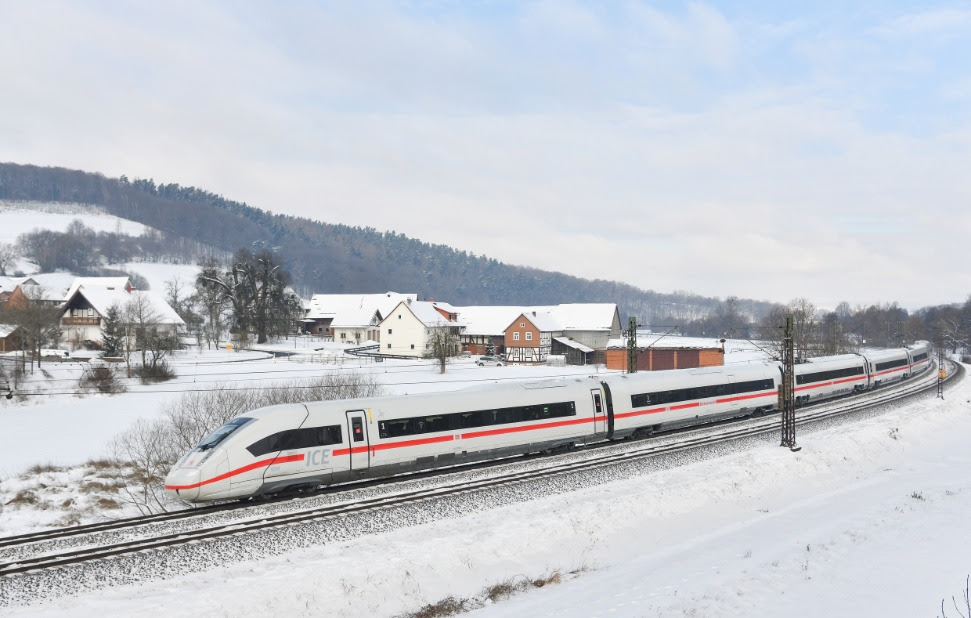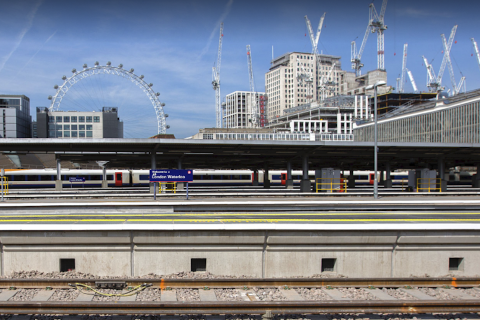DB sees surge in international long-distance travel

The international long-distance travel sector of Deutsche Bahn (DB) has experienced a remarkable surge, with 24 million travellers crossing borders in 2023, marking a substantial 21 per cent increase compared to 2019.
This surge has significantly surpassed pre-COVID levels, reflecting a robust recovery in long-distance travel. During the same period, the DB has expanded seating capacity by 13 per cent, introducing new routes and deploying longer trains to meet growing demand.
Dr Michael Peterson, Executive Board Member for Long-Distance Passenger Transport at DB, commented: “Europeans are increasingly choosing rail travel, with 2023 witnessing a remarkable surge in international journeys by train. This growth underscores the appeal of train travel, offering convenient city-to-city connections with short travel times and competitive pricing. Moreover, every journey taken by train contributes to active climate protection for Europe.”
The Berlin–Amsterdam route experienced the most significant increase among DB international routes, with 64,000 more passengers in 2023 than in 2022, marking a rise of 23 per cent. The Berlin–Warsaw route witnessed an additional 51,000 travellers, representing a substantial growth of 22 per cent. In the case of the Munich–Verona route, there were 17,000 extra passengers, reflecting a 20 per cent increase. Moreover, the Munich–Vienna route saw an additional 72,500 travellers, indicating a 17 per cent rise in ridership. Finally, the Munich–Zurich route observed 17,000 more passengers, reflecting a 16 per cent increase.

Expansion of DB’s international service
Looking ahead, Deutsche Bahn plans to further enhance its international services. A notable development includes the introduction of the ICE 3neo, expected to commence operations on the Frankfurt/Main–Brussels and Frankfurt/Main–Amsterdam routes from mid-June 2024 on, six months ahead of schedule. This accelerated timeline is attributed to collaborative efforts with Siemens Mobility, regulatory bodies, and European partner railways. The deployment of state-of-the-art trains aims to replace older models, ensuring improved reliability and passenger comfort on international routes.
In 2024, key schedule updates include the shortening of the Berlin–Amsterdam route by half an hour for increased efficiency and convenience. Additionally, direct trains from Frankfurt/Main to Bordeaux will resume on summer Saturdays, with service extended to and from Stuttgart from mid-July, enhancing travel options for passengers. Furthermore, the introduction of the Berlin–Paris/Brussels night train three times a week, along with the Munich–Vienna–Wroclaw–Krakow–Warsaw night train, offers travellers more flexibility and overnight travel options.
Another notable update is the introduction of a second direct connection between Berlin/Erfurt–Linz/Vienna, catering to growing demand on this route. The expansion of daily (Berlin-)Frankfurt/Main–Stuttgart–Innsbruck service provides increased connectivity between major cities. Moreover, passengers will benefit from an increase in direct connections between Hamburg and Copenhagen. Additionally, the Munich–Zurich service will see an expansion with the addition of a seventh train pair for round trips, catering to heightened demand. Lastly, extra trains between Berlin and Prague will operate during the summer months of June to September, accommodating increased travel during the peak season.

New rolling stock in the 2024 schedule
Several new vehicles will be put in service for the 2024 schedule. These include an increasing replacement of Intercity trains with ICE trains between Germany and Austria, aimed at providing faster and more efficient journeys. Additionally, passengers can look forward to the deployment of new Railjets between Munich and Italy starting in April 2024, offering improved connectivity to Italian destinations.
From June 2024, the introduction of the ICE 3neo on the Frankfurt/Main–Brussels and Frankfurt/Main–Amsterdam routes will bring state-of-the-art technology and comfort to these popular international routes. Furthermore, the introduction of the new Nightjet in night service on the Hamburg–Vienna/Innsbruck route, with plans for expansion to the Vienna/Munich–Rome route from autumn 2024 on, will offer passengers overnight travel options. The debut of the SBB high-speed train Giruno on the Frankfurt–Zurich–Milan route in summer will further improve travel between these major European cities.
Moreover, passengers travelling between Berlin and Prague can expect a gradual introduction of new Railjets from Czech Railways ČD starting in autumn 2024, enhancing connectivity between the two capitals. Finally, to meet high demand, trains with double capacity will be deployed between Frankfurt and Paris on select days, providing more seats for travellers during peak periods.
Further reading:





The total figure of 24,000,000 international rail travellers apparently includes local transport and cross-border commuters.
Berlin–Warsaw +51,000 travellers = +22 per cent to 282,000.
Munich–Verona 17,000 = +20% to 102,000.
Munich–Vienna +72,500 = +17% to 426,500.
Munich–Zurich +17,000 = +16% to 123,000.
Total for theses four long distance routes: 933,000.
Only on direct train daily to Marseille, and its timetable does not allow connections to or from Nice. Milano-Frankfurt abolished.
The renewed once-only daily service Frankfurt to Milan will start at Frankfurt before 8 am, so it will be inconvenient to reach from most places north of Frankfurt. Similar to Franco-German trains from Bordeaux.
As it is integrated in the regular two-hourly intervals Milan-Zurich, and is also one of the rather rare trains Frankfurt – Zurich, trains are rather frequented, indicated by quite expensive tickets.